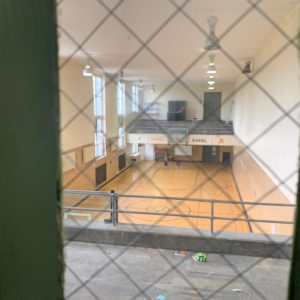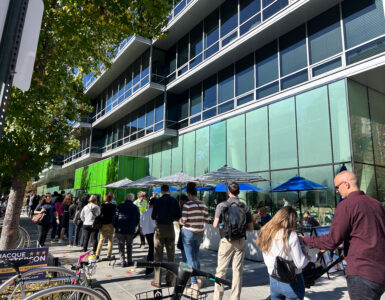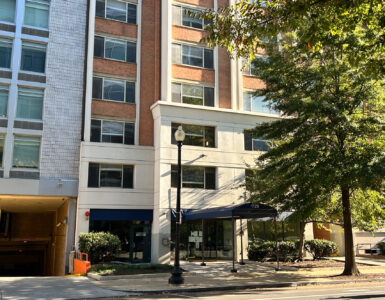An overcrowded local school is finally getting some short-term updates in order to accommodate a student population growth that shows no signs of stopping.
According to Cedric Hendricks, chair of the Francis-Stevens Local School Advisory Team, the school is addressing the overcrowding issue by converting two balconies in a gym into two classrooms by early next year. Also, four portable classrooms are slated to be added for the 2020-2021 school year. These are temporary solutions before a complete modernization of the school, which is expected to take several years.
The school’s maximum capacity is 513 students. D.C. Public Schools is projecting 650 students by 2024. Short term fixes won’t be enough and a three-year modernization project with a $75 million price tag is on the horizon.

Two schools merged with the prestigious D.C. magnet high school, School Without Walls, to become School Without Walls at Francis-Stevens School in 2013 after the schools were scheduled for closure due to low enrollment.
School Without Walls at Francis-Stevens serves pre-K through eighth grade and has essentially become a victim of its own success.
Patrick Kennedy, the commissioner of Advisory Neighborhood Commission 2A, attributes the success to retention, high test scores and parent survey satisfaction. Many families have moved to Ward 2 for the sole reason to send their kids to Francis-Stevens.
Kennedy said there are 800 kids on the waiting list for Francis-Stevens.
Hendricks said that last year there were 474 enrolled students. This year enrollment swelled to 540 students, which was higher than both the D.C. Public Schools estimate of 495 students and the LSAT estimate of 505 students.
“We have a high performing school and that has certainly contributed to growth. Being overcrowded will undermine that success,” Hendricks said.
Kennedy said that over the course of the process of saving the school, the community itself became more invested. Neighborhood leaders, parents and faculty came together and now the school is the gem of the community.
Six years later, that same committed group of community members is fighting for upgraded facilities and a larger campus.
Julian Wright, 7, is a second grader at Francis-Stevens that loves going to school but his father told The Wash, “middle school classes are bursting at the seams.”
Both of Julian’s parents are very involved with the school. Julian Wright Sr. is a member of the LSAT and chancellor advisory board. He also coaches lacrosse and cross country. His wife Adria is a soccer coach.
Adria said that the bathrooms are in major disrepair and that the toilets regularly overflow and stink up the halls.
The playground needs to be renovated. Adria said she had to rescue a child that got stuck in a playground obstacle. Also, two children have suffered broken arms this year.
Adria also said that the cafeteria, which is staffed by SodexoMAGIC, could really use an additional staff member.

“They look tired,” she said.
Ross Elementary and Thomson Elementary are two feeder schools contributing to overcrowding. On top of that, the fourth grade also expanded but had to be put in small rooms, because the larger middle school classes needed the bigger rooms.
“Renovations are definitely needed. This building is old,” said Monica Stephenson, a second-grade teacher at Francis-Stevens.
Stephenson’s classroom barely has room for students to hang up their coats. There are no cubbies and the students are packed tightly in the classroom.
She said that she loves the culture at Francis-Stevens, but the students deserve better facilities.
“For the 21st century, we should have a 21st century building. This is archaic,” Stephenson said.

The modernization project is expected to take three years and is currently slated to begin in 2022. The first year is dedicated to planning while the other two years are for construction.
According to Kennedy, the planning phase, which includes preliminary engineering, is expected to cost $5 million. The construction phase would bring the total project cost to approximately $75 million.
Julian said that the project desperately needs to be moved up to address the overcrowding and facility needs.
Two weeks ago, Julian went to an ANC meeting where the mayor was in attendance and the main topic was the overcrowding at Francis-Stevens. The mayor told him about a special projects budget.
“We want to be that special project. It’s not a vanity play, it’s a necessity,” Julian said.
He said that the next steps are to meet with the city council, which ultimately controls the budget.















Add comment